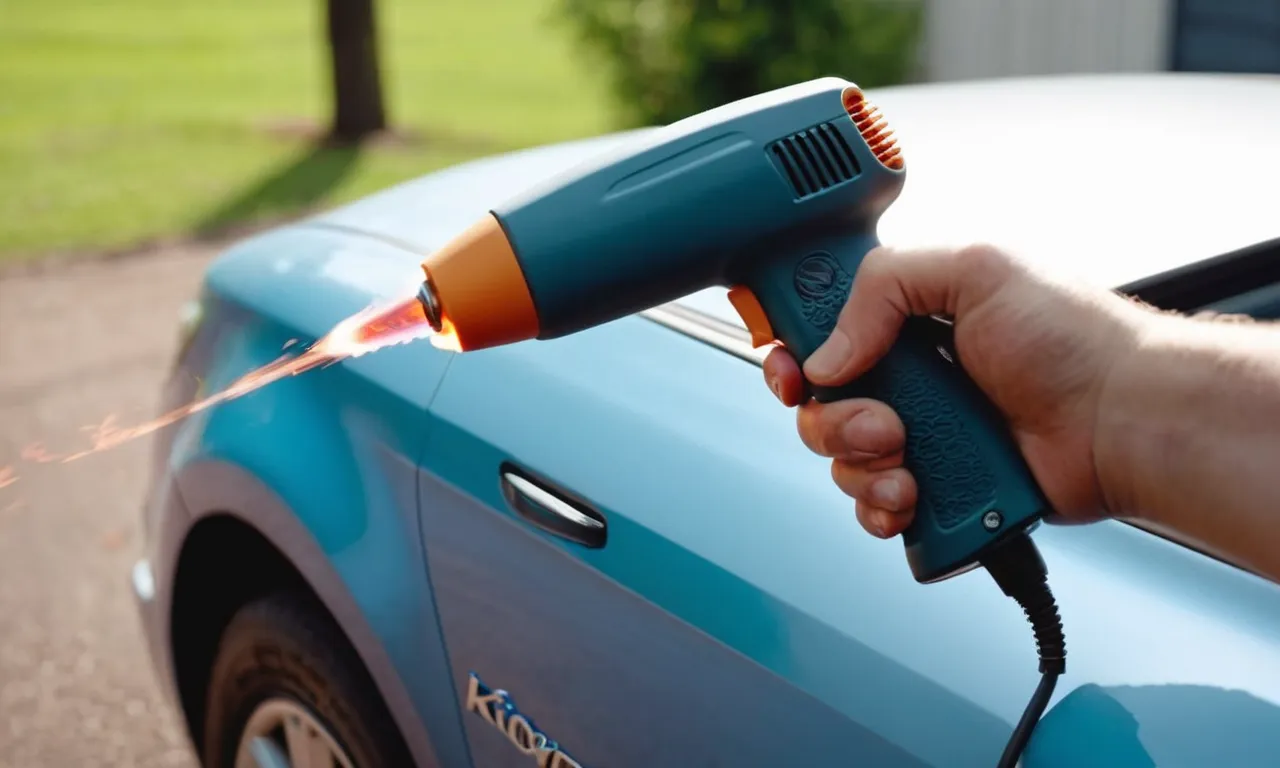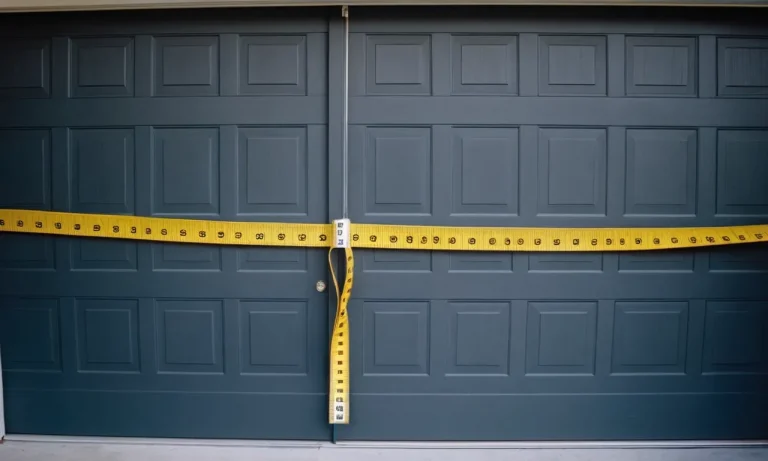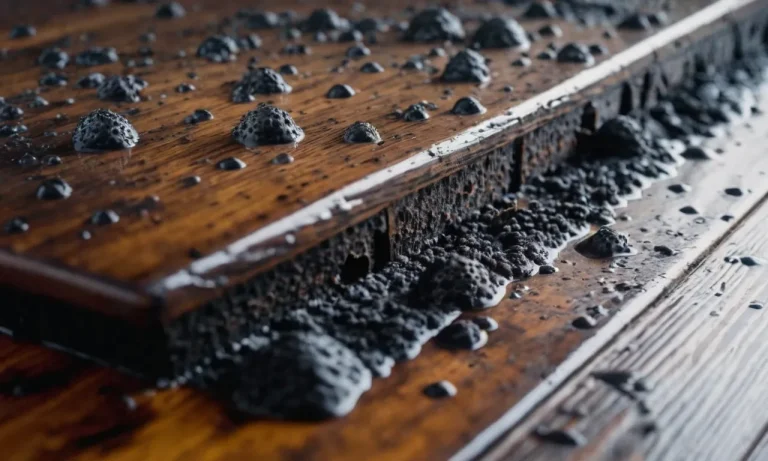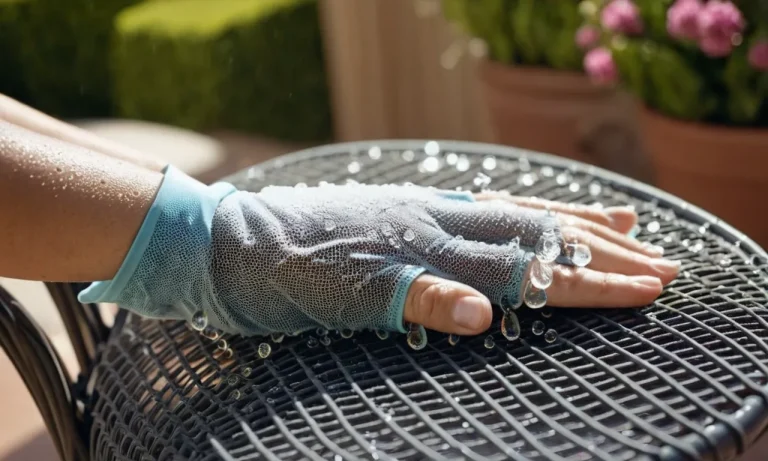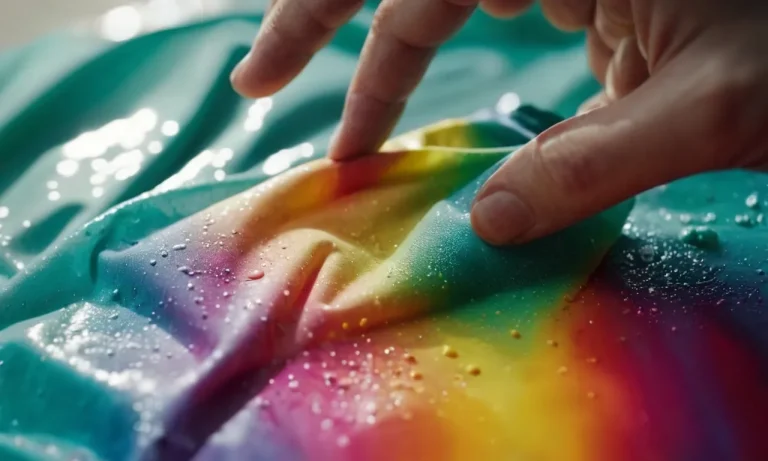How To Remove Decals From Your Car Without Damaging The Paint
Has your car lost its luster due to fading, peeling decals? While decals can be a fun way to customize your ride, they don’t last forever. Removing them can be tricky business if you want to preserve your car’s factory paint job.
Fortunately, with some patience and the right techniques, you can banish those stickers and restore your paintwork’s original brilliance.
If you’re short on time, here’s the quick answer to removing decals without damaging your car’s paint: use a heat gun or hair dryer to soften the adhesive, then slowly peel off the decal. Avoid using harsh chemical solvents which can ruin your clearcoat.
Go slowly and stop if the decal resists removal to avoid pulling up the paint underneath.
Assess the Decal’s Condition
Before attempting to remove a decal from your car, it is important to assess its condition. This will help you determine the best approach to take in order to avoid any damage to your car’s paint. Here are a few things to consider:
Determine if it’s vinyl or painted on
The first step is to determine whether the decal is made of vinyl or if it has been painted directly onto the car’s surface. Vinyl decals are typically easier to remove as they can be peeled off without leaving much residue behind.
On the other hand, decals that have been painted on may require more effort to remove without damaging the paint.
Check if the decal is faded or cracking
If the decal is faded or cracking, it may be easier to remove without causing damage to the paint. Faded decals are often more brittle and can be peeled off more easily. However, if the decal is still in good condition, you may need to take extra precautions to avoid scratching or chipping the paint during removal.
Look for damage to the clearcoat underneath
Before removing the decal, inspect the clearcoat underneath for any signs of damage. If the clearcoat is already compromised, removing the decal may cause further damage to the paint. In such cases, it is recommended to seek professional help to prevent any additional harm to your car’s exterior.
Remember, taking the time to assess the condition of the decal before attempting to remove it will help you choose the most appropriate method and minimize the risk of damaging your car’s paint.
Remove Decal Residue with Solvents
When it comes to removing stubborn decal residue from your car, solvents can be a useful tool in your arsenal. However, it’s important to approach this task with caution to avoid damaging the paint. Here are some tips to effectively remove decal residue using solvents:
Try mildly aggressive solvents first
Start by using mildly aggressive solvents such as rubbing alcohol, vinegar, or nail polish remover. These solvents are commonly found in households and can effectively break down the adhesive residue left behind by decals.
Apply a small amount of the solvent onto a clean cloth or sponge and gently rub the residue in a circular motion.
Pro tip: For particularly stubborn residue, you can try using a commercial adhesive remover specifically designed for automotive surfaces. These products are formulated to be safe for use on car paint.
Spot test solvents on an inconspicuous area
Before applying any solvent to the decal residue, it’s important to perform a spot test on an inconspicuous area of your car’s paint. This will help you determine if the solvent will cause any damage or discoloration.
Apply a small amount of the solvent to a hidden area and wait for a few minutes to see if any adverse reactions occur. If there are no negative effects, you can proceed with confidence.
Pro tip: It’s always a good idea to consult your car’s manufacturer or a professional detailer for specific product recommendations and advice.
Be gentle when rubbing; don’t grind residue into the paint
When using solvents to remove decal residue, it’s crucial to be gentle and avoid grinding the residue into the paint. Use light pressure and circular motions to slowly lift the residue off the surface.
Rubbing too vigorously can lead to scratches or damage to the paint, so take your time and be patient.
Pro tip: For added protection, consider placing a soft cloth or towel between your finger and the surface while rubbing to minimize direct contact and potential damage.
By following these tips, you can effectively remove decal residue from your car without damaging the paint. Remember to always exercise caution and take necessary precautions to preserve the integrity of your vehicle’s exterior.
Heat Decal Prior to Removal
One effective way to remove decals from your car without damaging the paint is by using heat. Heating the decal helps to soften the adhesive, making it easier to peel off without leaving any residue behind.
Use a heat gun or hair dryer to soften the adhesive
When using heat to remove decals, you have two options: a heat gun or a hair dryer. Both tools can generate enough heat to loosen the adhesive. However, it’s important to use them carefully to avoid damaging the paint.
If you decide to use a heat gun, set it to a low or medium setting to prevent overheating. Hold the heat gun a few inches away from the decal and move it constantly to distribute the heat evenly. This will help soften the adhesive without burning the paint.
A hair dryer can also be used as an alternative to a heat gun. Start by setting the hair dryer to its highest heat setting. Hold it close to the decal and move it in a back-and-forth motion. The hot air will gradually soften the adhesive, allowing you to remove the decal easily.
Move heating element constantly to avoid burning paint
Whether you’re using a heat gun or a hair dryer, it’s crucial to keep the heating element moving at all times. Leaving the heat in one spot for too long can cause the paint to blister or bubble, leading to potential damage.
Remember to maintain a safe distance between the heat source and the decal. This will help prevent any accidental burns or overheating of the paint. By moving the heating element constantly, you’ll ensure that the heat is evenly distributed, making the decal easier to remove.
Heat until decal is pliable enough to peel up
Continue applying heat to the decal until it becomes pliable enough to peel up. You can test its flexibility by gently lifting a corner of the decal with your fingernail or a plastic scraper. If it lifts easily without resistance, it’s ready to be removed.
Once the decal is pliable, use your fingers or a plastic scraper to slowly peel it away from the surface of the car. Start from one corner and gradually work your way across, applying gentle pressure to separate the decal from the paint.
If any adhesive residue remains, you can use a mild adhesive remover to clean it off.
Remember, using heat to remove decals requires patience and caution. Take your time and follow the steps carefully to avoid any damage to your car’s paint. With the right technique, you’ll be able to remove decals effortlessly and leave your car looking clean and pristine.
Goo Gone and Dental Floss Can Help
Removing decals from your car can be a daunting task, especially if you’re worried about damaging the paint. Luckily, there are some simple and effective methods you can use to safely remove decals without causing any harm. Two of the most popular tools for this job are Goo Gone and dental floss.
Apply Goo Gone directly to adhesive residue
Goo Gone is a powerful adhesive remover that can help break down the sticky residue left behind by decals. To use Goo Gone, simply apply a small amount directly to the adhesive residue on your car’s surface. Allow it to sit for a few minutes to penetrate the adhesive, making it easier to remove.
It’s important to note that Goo Gone is a chemical product, so it’s always a good idea to test it on a small, inconspicuous area of your car’s paint before using it on a larger area. This will ensure that it doesn’t cause any discoloration or damage to the paint.
Allow to soak then wipe with microfiber cloth
After allowing the Goo Gone to soak into the adhesive residue, take a clean microfiber cloth and gently wipe away the residue. The microfiber cloth is soft and non-abrasive, which helps protect your car’s paint from scratches or other damage.
In some cases, you may need to repeat this process a few times to completely remove all of the adhesive residue. Be patient and continue to apply the Goo Gone as needed until the surface is clean.
Use dental floss to sever stubborn vinyl decals
If you’re dealing with stubborn vinyl decals that won’t budge, dental floss can be a surprisingly effective tool. Simply slide a piece of dental floss under the edge of the decal and use a sawing motion to work the floss back and forth.
This will gradually loosen the adhesive and allow you to peel off the decal without damaging the paint.
It’s worth noting that this method works best on smaller decals or decals that have been on the car for a relatively short period of time. For larger decals or decals that have been on the car for a long time, it may be necessary to use a heat gun or other specialized tools to remove them safely.
Remember, when using any method to remove decals from your car, it’s important to take your time and be gentle. Rushing the process or using excessive force can lead to paint damage, which can be costly to repair.
If you’re unsure about how to proceed, it’s always a good idea to seek professional help or advice.
For more information and detailed step-by-step instructions on removing decals from cars, you can visit https://www.cartalk.com/blogs/how-remove-decals-your-vehicle.
Avoid Harsh Chemical Paint Strippers
When it comes to removing decals from your car without damaging the paint, it’s important to steer clear of harsh chemical paint strippers. These types of products often contain solvents with methylene chloride, which can be extremely damaging to the clearcoat of your car’s paint.
Methylene chloride is known for its strong chemical properties and can cause the clearcoat to become discolored or even peel off entirely. To avoid this potential disaster, it’s best to explore alternative methods of decal removal.
Solvents with methylene chloride can damage clearcoat
Methylene chloride is a powerful chemical that is commonly found in paint strippers. While it may be effective in removing decals, it can also have a detrimental effect on the clearcoat of your car’s paint.
The clearcoat is a protective layer that helps to maintain the shine and integrity of your car’s paint job. If the clearcoat becomes damaged, it can lead to costly repairs and a diminished overall appearance of your vehicle.
It’s best to avoid solvents with methylene chloride altogether to ensure the longevity of your car’s paint.
Test less aggressive chemicals first before using paint stripper
If you’re determined to remove decals using a chemical solution, it’s wise to test less aggressive chemicals first before resorting to a paint stripper. Some less aggressive options include rubbing alcohol, vinegar, or adhesive removers.
These solutions can be applied to a small, inconspicuous area of the decal to see how they react with the paint. By doing a test spot, you can gauge the effectiveness of the solution without risking damage to the entire paint job.
Remember to always follow the manufacturer’s instructions and use caution when applying any chemicals to your car’s surface.
Apply and remove quickly if you must use paint stripper
In the event that you must use a paint stripper to remove decals, it’s important to apply and remove the product quickly. Leaving the paint stripper on for an extended period of time can increase the risk of damage to the clearcoat.
Follow the instructions on the paint stripper carefully and work in small sections. Apply the product, allow it to sit for the recommended time, and then gently scrape off the decal using a plastic scraper or credit card.
Be sure to rinse the area thoroughly with water afterward to remove any residue. It’s best to work in a well-ventilated area and wear gloves to protect your skin.
Remember, prevention is always better than cure when it comes to protecting your car’s paint. Avoiding the use of harsh chemical paint strippers and exploring alternative methods for decal removal can help preserve the beauty and value of your vehicle for years to come.
Conclusion
With some care and effort, you can banish faded decals from your car without inflicting damage to the underlying paint. Avoid harsh chemicals if possible and use heat to soften vinyl appliques prior to removal.
For any remaining adhesive residue, solvents like Goo Gone coupled with gentle agitation can get your car’s exterior looking showroom-new again.

